先自我介绍一下,小编浙江大学毕业,去过华为、字节跳动等大厂,目前阿里P7
深知大多数程序员,想要提升技能,往往是自己摸索成长,但自己不成体系的自学效果低效又漫长,而且极易碰到天花板技术停滞不前!
因此收集整理了一份《2024年最新Linux运维全套学习资料》,初衷也很简单,就是希望能够帮助到想自学提升又不知道该从何学起的朋友。

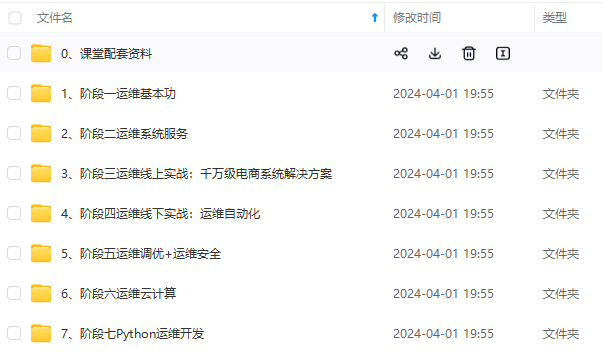
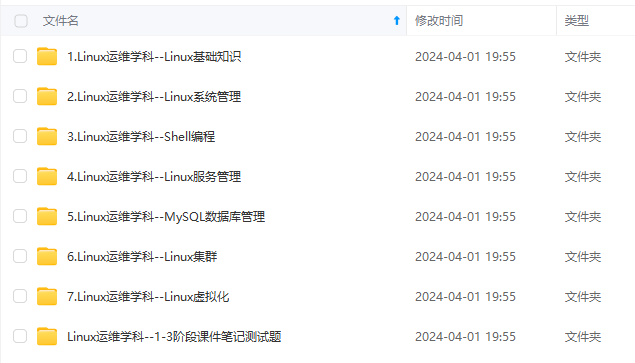
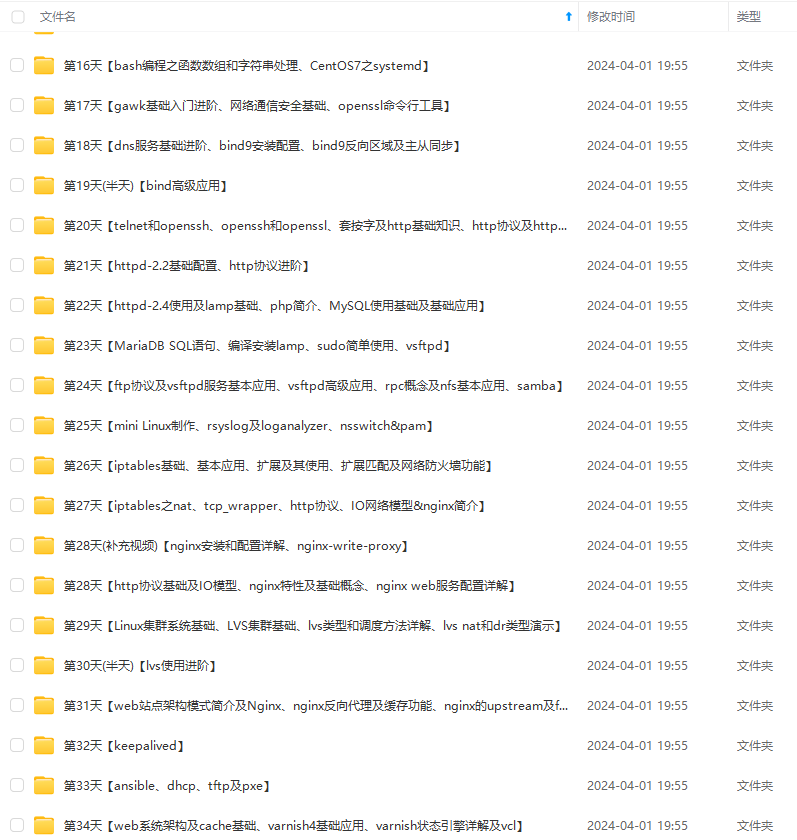

既有适合小白学习的零基础资料,也有适合3年以上经验的小伙伴深入学习提升的进阶课程,涵盖了95%以上运维知识点,真正体系化!
由于文件比较多,这里只是将部分目录截图出来,全套包含大厂面经、学习笔记、源码讲义、实战项目、大纲路线、讲解视频,并且后续会持续更新
如果你需要这些资料,可以添加V获取:vip1024b (备注运维)

正文
Default device class. Only the major and minor device class bits are
considered. Defaults to ‘0x000000’.
#Class = 0x000100
How long to stay in discoverable mode before going back to non-discoverable
The value is in seconds. Default is 180, i.e. 3 minutes.
0 = disable timer, i.e. stay discoverable forever
#DiscoverableTimeout = 0
How long to stay in pairable mode before going back to non-discoverable
The value is in seconds. Default is 0.
0 = disable timer, i.e. stay pairable forever
#PairableTimeout = 0
Use vendor id source (assigner), vendor, product and version information for
DID profile support. The values are separated by “:” and assigner, VID, PID
and version.
Possible vendor id source values: bluetooth, usb (defaults to usb)
#DeviceID = bluetooth🔢5678:abcd
Do reverse service discovery for previously unknown devices that connect to
us. This option is really only needed for qualification since the BITE tester
doesn’t like us doing reverse SDP for some test cases (though there could in
theory be other useful purposes for this too). Defaults to ‘true’.
#ReverseServiceDiscovery = true
Enable name resolving after inquiry. Set it to ‘false’ if you don’t need
remote devices name and want shorter discovery cycle. Defaults to ‘true’.
#NameResolving = true
Enable runtime persistency of debug link keys. Default is false which
makes debug link keys valid only for the duration of the connection
that they were created for.
#DebugKeys = false
Restricts all controllers to the specified transport. Default value
is “dual”, i.e. both BR/EDR and LE enabled (when supported by the HW).
Possible values: “dual”, “bredr”, “le”
ControllerMode = dual
Enables Multi Profile Specification support. This allows to specify if
system supports only Multiple Profiles Single Device (MPSD) configuration
or both Multiple Profiles Single Device (MPSD) and Multiple Profiles Multiple
Devices (MPMD) configurations.
Possible values: “off”, “single”, “multiple”
MultiProfile = on
Permanently enables the Fast Connectable setting for adapters that
support it. When enabled other devices can connect faster to us,
however the tradeoff is increased power consumptions. This feature
will fully work only on kernel version 4.1 and newer. Defaults to
‘false’.
FastConnectable = true
Default privacy setting.
Enables use of private address.
Possible values: “off”, “device”, “network”
“network” option not supported currently
Defaults to “off”
Privacy = off
[GATT]
GATT attribute cache.
Possible values:
always: Always cache attributes even for devices not paired, this is
recommended as it is best for interoperability, with more consistent
reconnection times and enables proper tracking of notifications for all
devices.
yes: Only cache attributes of paired devices.
no: Never cache attributes
Default: always
Cache = always
Minimum required Encryption Key Size for accessing secured characteristics.
Possible values: 0 and 7-16. 0 means don’t care.
Defaults to 0
MinEncKeySize = 0
[Policy]
The ReconnectUUIDs defines the set of remote services that should try
to be reconnected to in case of a link loss (link supervision
timeout). The policy plugin should contain a sane set of values by
default, but this list can be overridden here. By setting the list to
empty the reconnection feature gets disabled.
#ReconnectUUIDs=00001112-0000-1000-8000-00805f9b34fb,0000111f-0000-1000-8000-00805f9b34fb,0000110a-0000-1000-8000-00805f9b34fb
ReconnectAttempts define the number of attempts to reconnect after a link
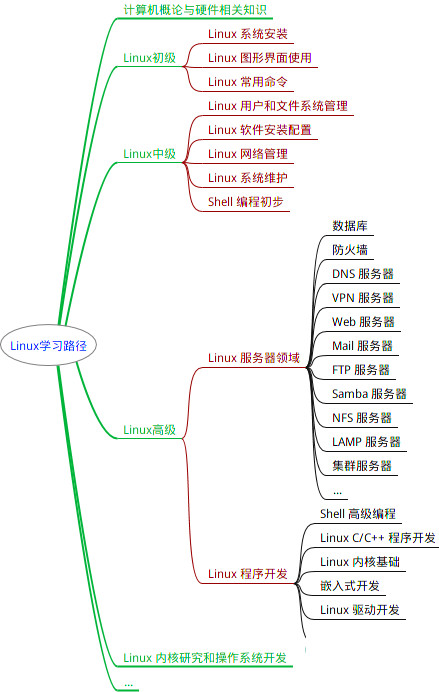
最全的Linux教程,Linux从入门到精通
======================
-
linux从入门到精通(第2版)
-
Linux系统移植
-
Linux驱动开发入门与实战
-
LINUX 系统移植 第2版
-
Linux开源网络全栈详解 从DPDK到OpenFlow
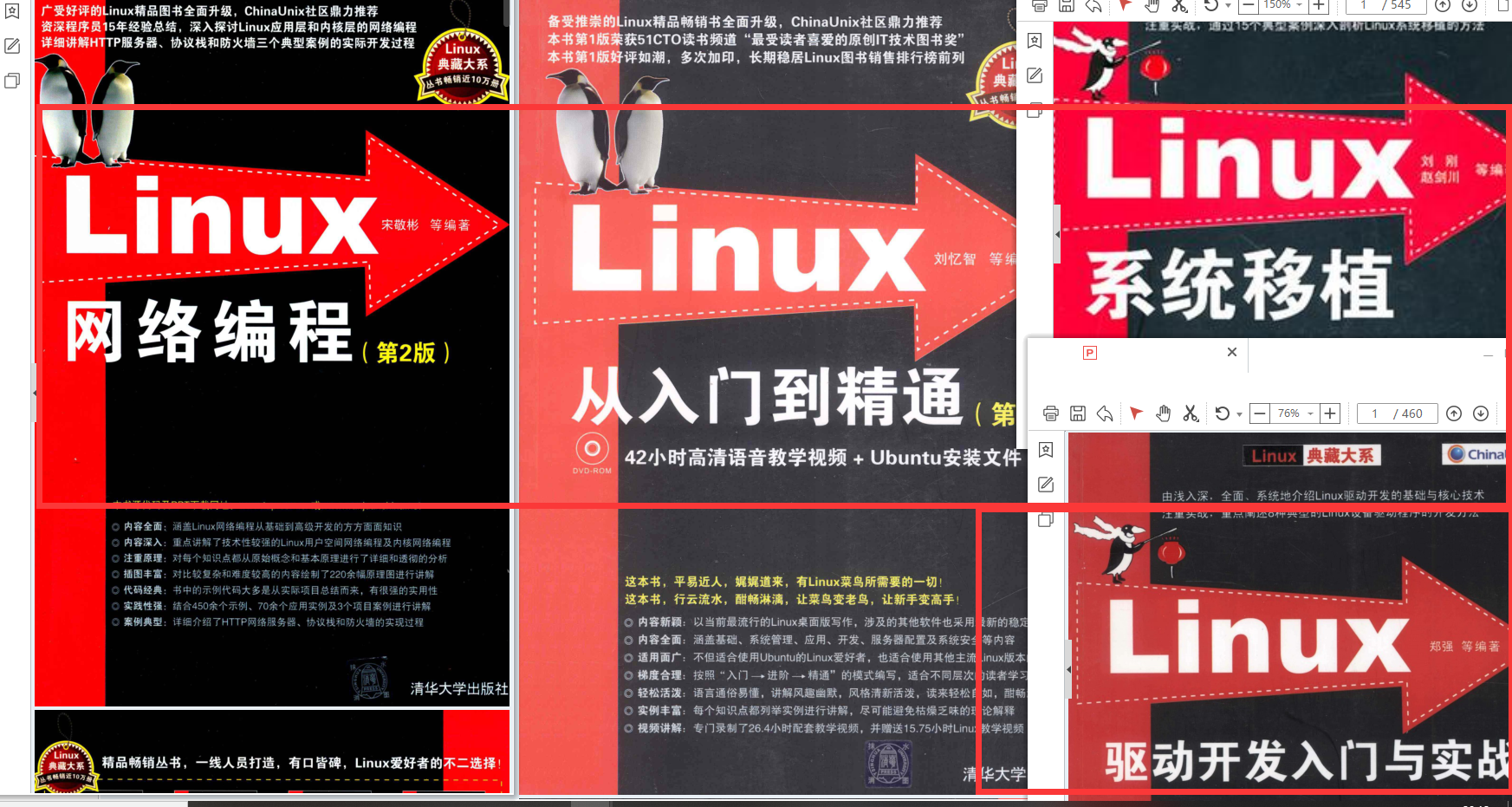
第一份《Linux从入门到精通》466页
====================
内容简介
====
本书是获得了很多读者好评的Linux经典畅销书**《Linux从入门到精通》的第2版**。本书第1版出版后曾经多次印刷,并被51CTO读书频道评为“最受读者喜爱的原创IT技术图书奖”。本书第﹖版以最新的Ubuntu 12.04为版本,循序渐进地向读者介绍了Linux 的基础应用、系统管理、网络应用、娱乐和办公、程序开发、服务器配置、系统安全等。本书附带1张光盘,内容为本书配套多媒体教学视频。另外,本书还为读者提供了大量的Linux学习资料和Ubuntu安装镜像文件,供读者免费下载。
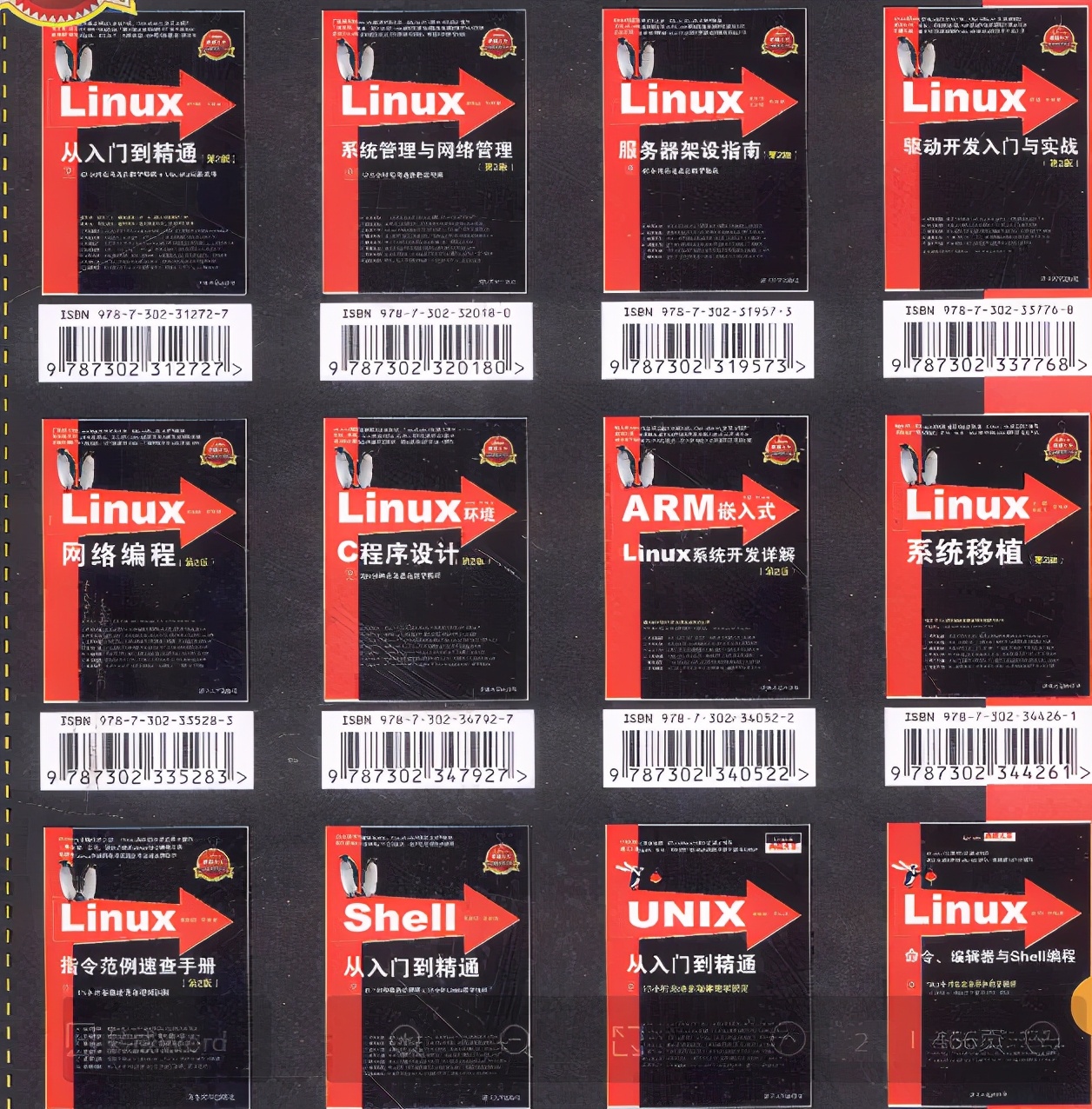
本书适合广大Linux初中级用户、开源软件爱好者和大专院校的学生阅读,同时也非常适合准备从事Linux平台开发的各类人员。
需要《Linux入门到精通》、《linux系统移植》、《Linux驱动开发入门实战》、《Linux开源网络全栈》电子书籍及教程的工程师朋友们劳烦您转发+评论
网上学习资料一大堆,但如果学到的知识不成体系,遇到问题时只是浅尝辄止,不再深入研究,那么很难做到真正的技术提升。
需要这份系统化的资料的朋友,可以添加V获取:vip1024b (备注运维)

一个人可以走的很快,但一群人才能走的更远!不论你是正从事IT行业的老鸟或是对IT行业感兴趣的新人,都欢迎加入我们的的圈子(技术交流、学习资源、职场吐槽、大厂内推、面试辅导),让我们一起学习成长!
024b (备注运维)**
[外链图片转存中…(img-mVYjQDq8-1713377780323)]
一个人可以走的很快,但一群人才能走的更远!不论你是正从事IT行业的老鸟或是对IT行业感兴趣的新人,都欢迎加入我们的的圈子(技术交流、学习资源、职场吐槽、大厂内推、面试辅导),让我们一起学习成长!






















 4826
4826











 被折叠的 条评论
为什么被折叠?
被折叠的 条评论
为什么被折叠?








